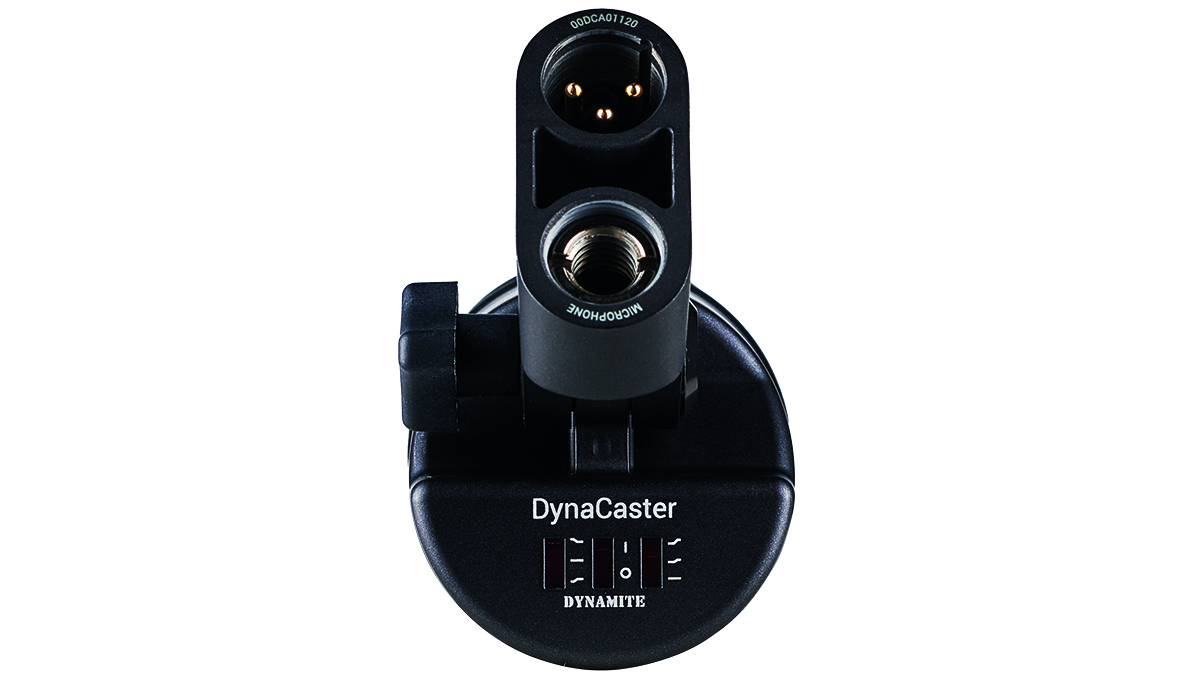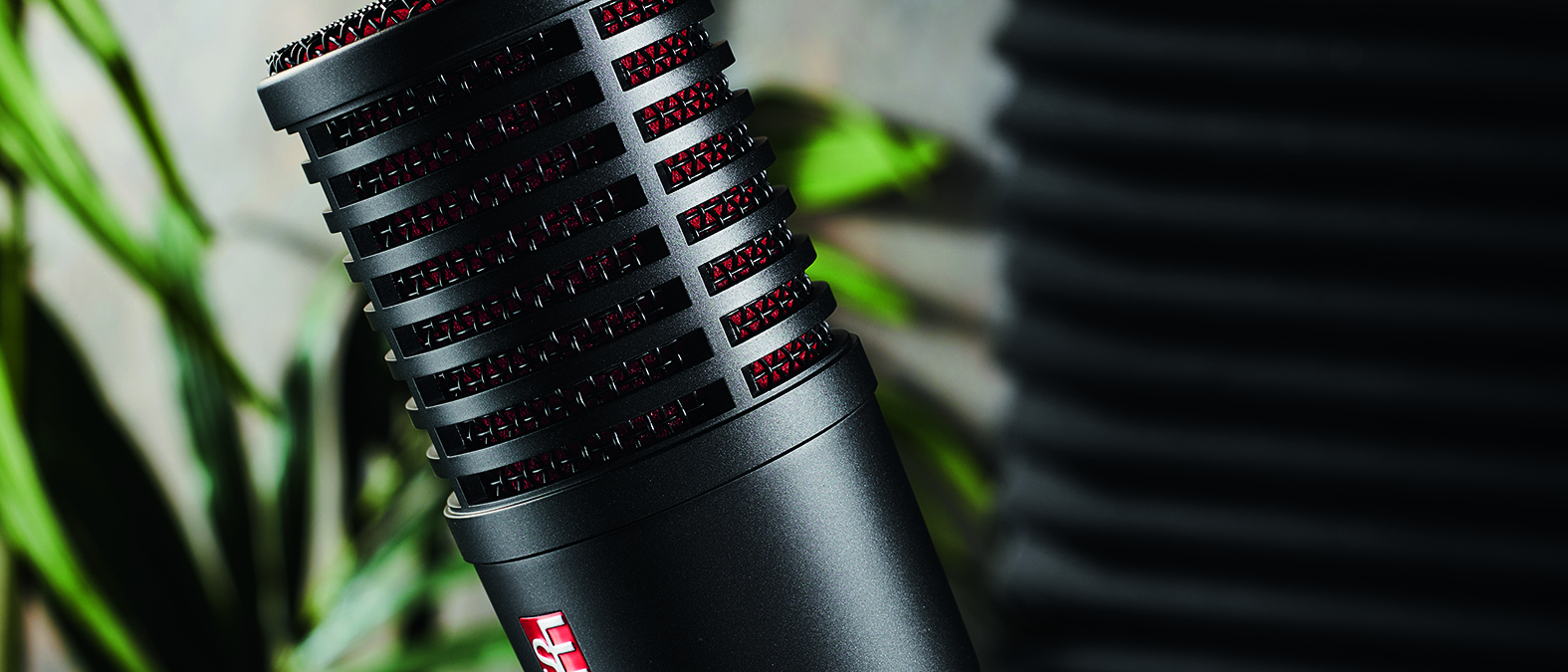MusicRadar Verdict
Easy to fall in love with. The addition of a quality preamp is a masterstroke that makes it a powerful solution for a range of uses.
Pros
- +
Built-in preamp provides a considerable amount of clean gain.
- +
Fabulous tone shaping tools and very versatile.
- +
Small form factor and built-in preamp, great for travel.
Cons
- -
Less seductive if you already own a high-end interface or preamp.
MusicRadar's got your back
sE Electronics DynaCaster: What is it?
It’s the pricey, large-diaphragm studio condenser mics that get many of us drooling with lust, but the fact is, most of us have to make do with a less expensive dynamic mic.
However, in many recording scenarios, the lowly dynamic mic is the better choice. It may not have the broad frequency response or impart quite the same level of clarity as a condenser, but it’s more robust, way better at rejecting unwanted room noise and can brush off epic SPL levels with impunity. Consequently, dynamic mics like the DynaCaster are perfect for recording voice and vocals in untreated rooms (that’s most home studios), screamers, guitar cabs, drums and much, much more.
The only fly in the ointment is that the best dynamic mics devour clean gain like there’s no tomorrow.
Until recently, the only solutions were to buy a pro-level interface/preamp or a Cloudlifter, but now the preamp-equipped DynaCaster is a truly nifty alternative that begs the question: why aren’t all dynamic mics built this way?
The DynaCaster is a dynamic end-address cardioid broadcast-style mic hiding a potent trick up its sleeve. It’s a little stubbier than an Electro-Voice RE-20 or a Shure SM7B but its all-metal construction and solid build gives it a reassuringly weighty feel. Drop this thing and your toes will come off worse.

The design is beautifully executed. The engineers at sE have invested a lot of time ensuring the integrated swivel mount will attach to virtually any mic stand or boom arm, making it a doddle to set up. It’s also easy to clean the built-in, three-layer removable pop-filter/windscreen.
Its custom aluminium voice coil-equipped capsule, which is suspended in an integrated shock mount, is similar to the one you’ll find in sE’s well-respected V7 hand-held mic but it’s been fettled to elevate the DynaCaster up a notch or two.
Want all the hottest music and gear news, reviews, deals, features and more, direct to your inbox? Sign up here.

sE Electronics DynaCaster: Performance and verdict
Make no mistake, even in passive mode the DynaCaster is a fantastic dynamic mic that’s more than capable of giving any high-end competition a run for its money. Its frequency response curve is almost flat, albeit slightly boosted, from 200Hz right up to 10kHz, with a gentle low-end roll-off and more pronounced high-end roll-off.
Sure enough, it’s an authentic mic to record with, one that rejects low-end rumble and doesn’t suffer from undue top-end harshness. It’s well suited to voice applications but can handle pretty much anything.
The magic really happens when you play with the three switches around the back. Fire up phantom power on your interface, activate the centre switch and the DynaCaster’s built in Dynamite preamp will deliver an impressive +30dB of clean gain. This amount of boost is more than enough to get you noise-free recordings, and we noticed that it provided a slightly fuller sound too.
Either side of the boost switch are two three-way tone shaping switches, a low frequency trim and a high frequency trim. The low end can be left flat, boosted to provide extra warmth or cut to eliminate boominess and rumble. The high-end trim works slightly differently, providing a flat setting plus two levels of boost.
Essentially, used in combination, these controls enable you to fine-tune the mic to its surroundings, your talent or both. The inclusion of these tone-shaping tools, the built-in preamp and the DynaCaster’s relatively compact size make it a superb choice for producers on the move, who are often tasked with recording unknown talent in unseen rooms using unfamiliar equipment.
Perhaps it’s our room, but the only setting we didn’t warm to was the high-level top boost, which sounded too thin, too harsh and did little other than emphasise sibilance. Still, this is a very clever dynamic mic capable of nailing the right sound, even in less than perfect conditions when you’re forced to use lower grade kit.
Calling it a broadcast mic is selling it short. Whether you’re a producer, vocalist, podcaster or simply need to mic up some guitar cabinets, the DynaCaster deserves your attention.
MusicRadar verdict: Easy to fall in love with. The addition of a quality preamp is a masterstroke that makes it a powerful solution for a range of uses.
sE Electronics DynaCaster: Hands-on demos
sE Electronics
Podcastage
The Dark Side of the Mic
Sweetwater
sE Electronics DynaCaster: Specifications
- KEY FEATURES Active Cardioid Dynamic Studio Microphone.
- CAPSULE: Dynamic.
- VOICE COIL: Aluminium.
- MAGNET: Neodymium.
- DIRECTIONAL PATTERN: Cardioid.
- FREQUENCY RANGE: 20 Hz - 19 kHz.
- SENSITIVITY: 2.0 / 60 mV/Pa (-54 / -24 dBV).
- POWER: +48V Phantom power.
- CURRENT: 3.0 mA.
- IMPEDANCE: 300 / 135 Ohms.
- CONTACT: sE Electronics
When Simon's childhood classical guitar teacher boasted he 'enjoyed a challenge', the poor man had no idea how much he'd underestimated the scale of the task ahead. Despite Simon's lack of talent, the experience did spark a lifelong passion for music. His classical guitar was discarded for an electric, then a room full of electrics before Simon discovered the joys of keys. Against all odds, Simon somehow managed to blag a career as a fashion journalist, but he's now more suitably employed writing for MusicRadar and Guitar World. When not writing or playing, he can be found terrifying himself on his mountain bike.

